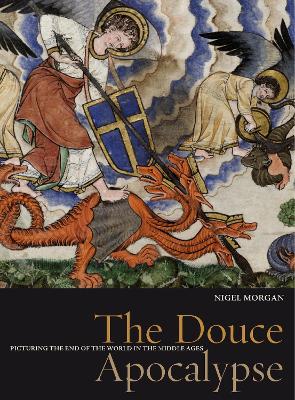Treasures from the Bodleian Library
1 total work
The Douce Apocalypse is one of the finest of a series of illustrated copies of the Apocalypse, the Revelation of St. John, made in England between 1250 and 1275. It was made for the prince Edward, later Edward I, and his wife Eleanor of Castile, probably c. 1270. The Apocalypse text, provided with a commentary, is illustrated by exquisite pictures on every page. The pictures illustrate the dramatic events and conflicts narrated in the series of visions of St. John. The dragon and the beast, symbolising the Devil and the Antichrist, are shown in their attempt to dominate the world, eventually to be overcome by Christ and the angels.
This lavishly illustrated book, the second in the series Treasures from the Bodleian Library introduces and explores the royal patronage, Douce Apocalypse, its imagery, its artistic creation and its contemporary significance in the context of prophecies concerning the coming of the Antichrist.
A special aspect of the book, evident in a few of its pictures, is that the artist had only partially completed his drawing, gilding and painting. This gives a fascinating insight into the techniques of medieval illumination. The style of drawing and painting is an English interpretation of contemporary Parisian art, also seen in a closely related work of English panel painting, the Westminster Abbey Retable. The Douce Apocalypse also seems to come from that same milieu of royal patronage at Westminster.
Though no modern book can match the beauty of this great illuminated manuscript, this volume conveys both the beauty of the original and the enduring fascination of its contents.
This lavishly illustrated book, the second in the series Treasures from the Bodleian Library introduces and explores the royal patronage, Douce Apocalypse, its imagery, its artistic creation and its contemporary significance in the context of prophecies concerning the coming of the Antichrist.
A special aspect of the book, evident in a few of its pictures, is that the artist had only partially completed his drawing, gilding and painting. This gives a fascinating insight into the techniques of medieval illumination. The style of drawing and painting is an English interpretation of contemporary Parisian art, also seen in a closely related work of English panel painting, the Westminster Abbey Retable. The Douce Apocalypse also seems to come from that same milieu of royal patronage at Westminster.
Though no modern book can match the beauty of this great illuminated manuscript, this volume conveys both the beauty of the original and the enduring fascination of its contents.
